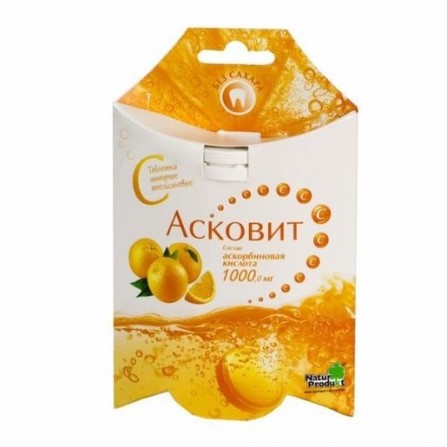Naproxen acry pills 250mg N30
Condition: New product
1000 Items
Rating:
Be the first to write a review!

More info
Active ingredients
Naproxen
Release form
Pills
Composition
Naproxen 250 mg; Excipients: lactose monohydrate - 71.12 mg, potato starch - 42 mg, povidone - 16 mg, magnesium stearate - 0.76 mg, dye tropeolin O - 0.12 mg.
Pharmacological effect
NSAID, a derivative of naphthylpropionic acid. It has anti-inflammatory, analgesic and antipyretic effects. The mechanism of action is associated with inhibition of the COX enzyme, which leads to inhibition of the synthesis of prostaglandins from arachidonic acid. Suppresses platelet aggregation.; Reduces pain, including joint pains at rest and when moving, morning stiffness and swelling of joints, contributes to an increase in range of motion. Anti-inflammatory effect occurs at the end of the 1st week of treatment.
Pharmacokinetics
After ingestion, naproxen is rapidly absorbed from the gastrointestinal tract. Cmax in plasma is achieved in 1-4 hours. Food slows down the rate of absorption, but does not reduce the degree of absorption. Naproxen is well absorbed when administered rectally, but absorption is slower than ingestion. At therapeutic concentrations, naproxen binds to plasma proteins by more than 99%. The concentration of naproxen in plasma increases proportionally at doses up to 500 mg, at higher doses an increase in clearance due to saturation of plasma proteins is observed. Naproxen diffuses into synovial fluid. T1 / 2 is about 13 hours. unchanged substance and 6-O-desmethylnaproxen and its conjugates. Less than 5% is injected with feces.
Indications
Rheumatoid arthritis, osteoarthritis, ankylosing spondylitis, articular syndrome with exacerbation of gout; pain in the spine, neuralgia, myalgia, traumatic inflammation of the soft tissues and the musculoskeletal system. As an adjunct in infectious-inflammatory diseases of the upper respiratory tract, adnexitis, primary dysmenorrhea, headache and toothache.
Contraindications
Erosive and ulcerative lesions of the gastrointestinal tract in the acute phase, "aspirin triad", hematopoietic disorders, pronounced renal dysfunction (CC less than 20 ml / min), pronounced hepatic dysfunction, children under 1 year old; hypersensitivity to naproxen and other NSAIDs.
Use during pregnancy and lactation
It is used with caution during pregnancy (especially in I and III trimesters) and during lactation. Naproxen penetrates the placental barrier, is excreted in breast milk in small quantities.
Dosage and administration
Set individually, taking into account the severity of the disease.; Inside adults - 0.5-1 g / day in 2 divided doses. The daily dose for maintenance treatment is 500 mg. The maximum daily dose is 1.75 g. For children aged 1 to 5 years, 2.5-5 mg / kg / day in 1 to 3 doses, the maximum course of treatment is 14 days. In juvenile arthritis in children older than 5 years, the daily dose is 10 mg / kg.
Side effects
On the part of the digestive system: nausea, vomiting, epigastric discomfort; rarely - erosive and ulcerative lesions of the gastrointestinal tract, bleeding and perforation of the gastrointestinal tract, abnormal liver function. From the central nervous system and peripheral nervous system: headache, drowsiness, slowing the speed of psychomotor reactions; rarely - hearing impairment; From the hematopoietic system: rarely - thrombocytopenia, granulocytopenia, aplastic anemia, hemolytic anemia; From the respiratory system: rarely - eosinophilic pneumonia.; From the urinary system: rarely - kidney dysfunction.; Allergic reactions: skin rash, urticaria, angioedema. With rectal use: the appearance of mucous discharge with blood, painful defecation.
Overdose
Symptoms: heartburn, dyspepsia, nausea, vomiting, drowsiness.; Treatment: gastric lavage, activated carbon - 0.5 g / kg. Dialysis is ineffective.
Interaction with other drugs
When used simultaneously with antacids containing magnesium and aluminum, sodium bicarbonate, absorption of naproxen is reduced. When used simultaneously with indirect anticoagulants, a small increase in the effect of anticoagulants has been described. When used with amoxicillin, a case of nephrotic syndrome has been described; with acetylsalicylic acid - a decrease in the concentration of naproxen in the blood plasma is possible.; With simultaneous use, it is possible to change the pharmacokinetic parameters of diazepam; caffeine - increases the effect of naproxen; with lithium carbonate - it is possible to increase the concentration of lithium in the blood plasma; withmethotrexate - may increase the toxicity of methotrexate. There are reports of the development of myoclonus with simultaneous use with morphine. With simultaneous use with prednisolone, a significant increase in plasma concentration of prednisone is possible; with probenecid - a decrease in the concentration of naproxen in the blood plasma; with salicylamide - increases the effect of salicylamide.; When used simultaneously with furosemide, it is possible to reduce the diuretic action of furosemide.
special instructions
Used with caution in diseases of the liver and kidneys, gastrointestinal diseases in history, in the presence of dyspeptic symptoms, in hypertension, heart failure, immediately after major surgical interventions. If it is necessary to determine the concentration of 17-ketosteroids, naproxen should be canceled 48 hours before the study.; Effect on the ability to drive vehicles and control mechanisms; etc. should refrain from the use of potentially dangerous activities associated with the need to focus and increased speed of psychomotor reactions.





